Affiliate disclosure: This post may contain affiliate links. Please see our Privacy Policy.
Eastern Redbud (Cercis canadensis) is a stunning tree with pink flowers each spring, but it also happens to be both edible and medicinal. This native tree can be found in the wild, but it’s also commonly planted as an ornamental in parks and around public buildings.
Learn how to identify redbud, plus ways to use this fun wild edible tree!
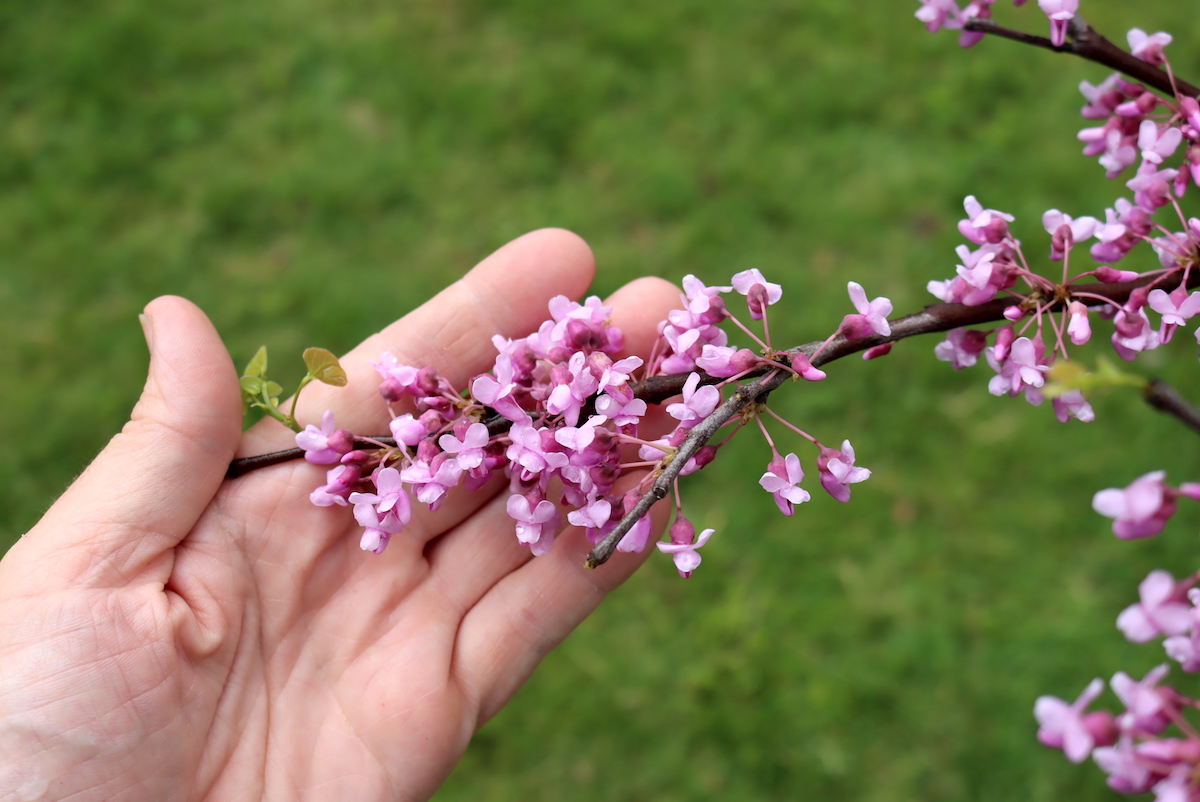
Eastern Redbud is a fun find, especially in the early spring when the tree is covered in bright pink blossoms. The flowers cover the stems, branches, and even the trunk of the tree before it leafs in, providing a food source for native pollinators.
Just about every part of the redbud tree is edible and useful, and many parts are also medicinal. The flowers are extremely high in vitamin C, making them an important early spring nutrient source historically.
The seed pods and leaves were tasty snacks too, ripening later in the season.
These days, foragers love making use of the spring blossoms, and they’re crafted into all kinds of cakes, syrups, teas, and treats.
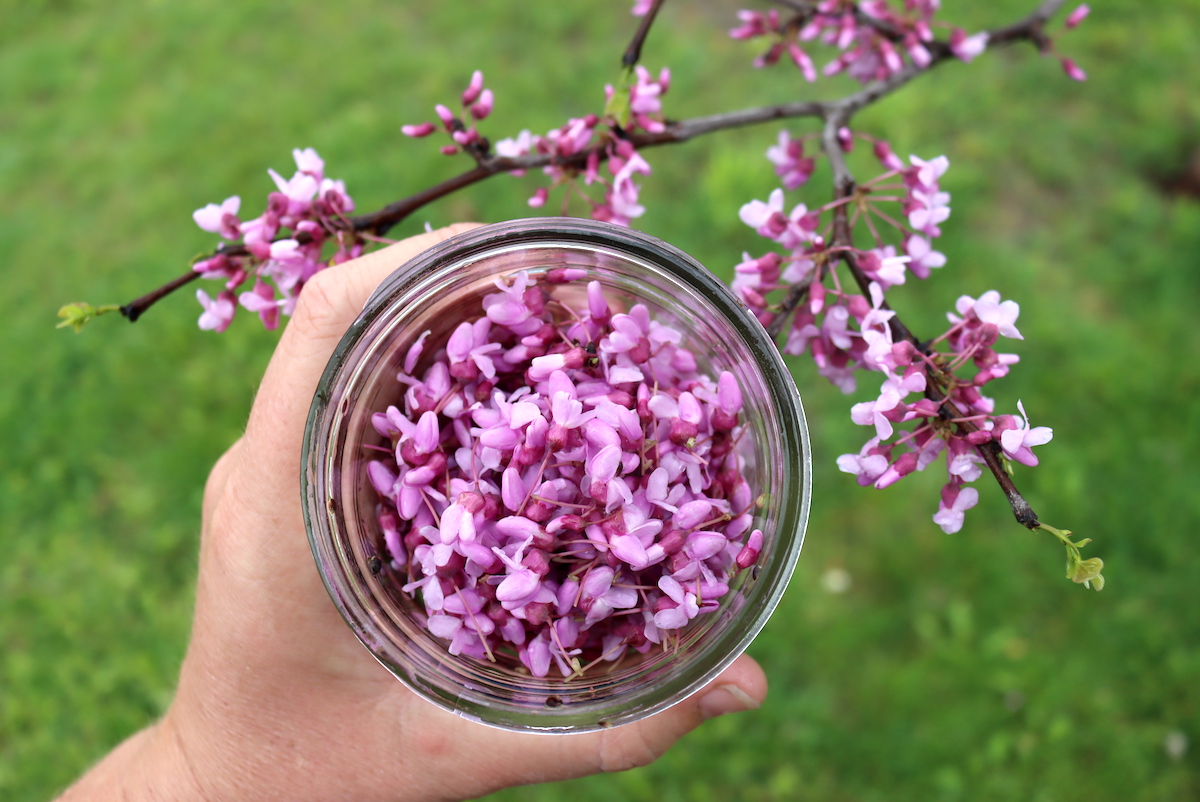
What is Eastern Redbud?
Eastern Redbud or Cercis canadensis is a small, perennial, deciduous tree with pink flowers in the early spring.
Eastern Redbud is in the Fabaceae family, often called the legume or pea family. It’s also sometimes called the Spicewood Tree or the Judas Tree after the closely related and similar-looking Mediterranean Redbud (Cercis siliquastrum), which plays a role in biblical stories.
It’s native to the eastern United States from Pennsylvania south to Florida, west to Nebraska, and south through Texas and parts of Mexico. In different parts of this range, there are three recognized subspecies of Eastern Redbud.
There are also several ornamental cultivars available.
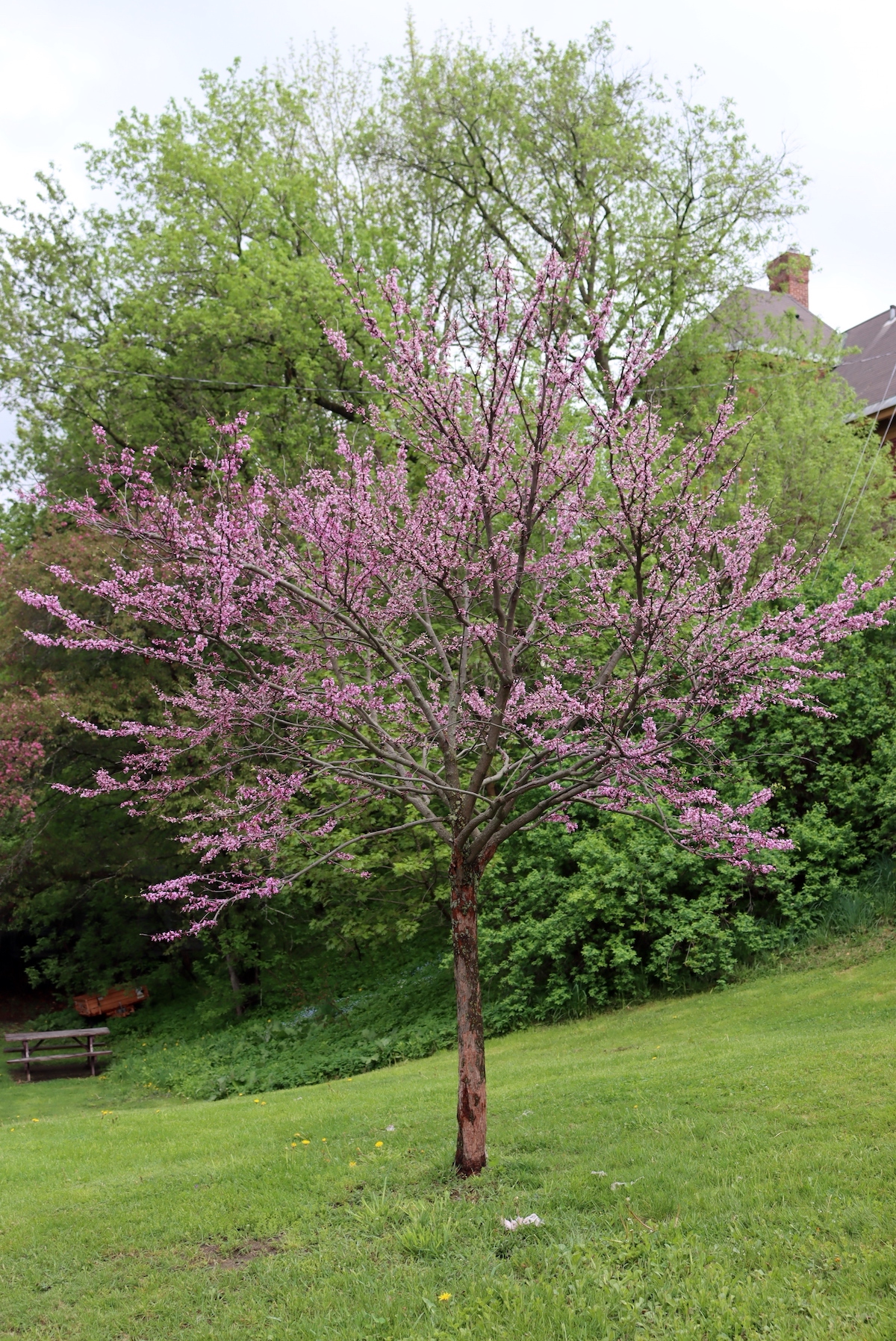
Is Eastern Redbud Edible?
Eastern Redbud is edible. Historically, the eastern Native Americans and settlers ate the flowers, leaves, and seeds of the Eastern Redbud.
You can eat Eastern Redbud flowers raw or cooked. When the tree is still flowering, you can collect the small tender leaves and eat them raw or cooked.
Later in the summer, the leaves are generally too tough to be eaten.

Additionally, you can harvest the young, tender, green pods and eat them raw or cooked, though many foragers report that their flavor is better after steaming or sauteing as you would snow peas.
You can also safely use the seeds inside the mature pods. However, you should cook these before eating them. Native Americans typically roasted the seeds. The Navajo reportedly roasted them in the shells in the coals of a fire, but you can also shell them first. The mature shell isn’t good to eat.
One of the tree’s common names, Spicewood Tree, comes from a culinary tradition. In parts of Appalachia, the green twigs are often used to season wild game like venison or possum.
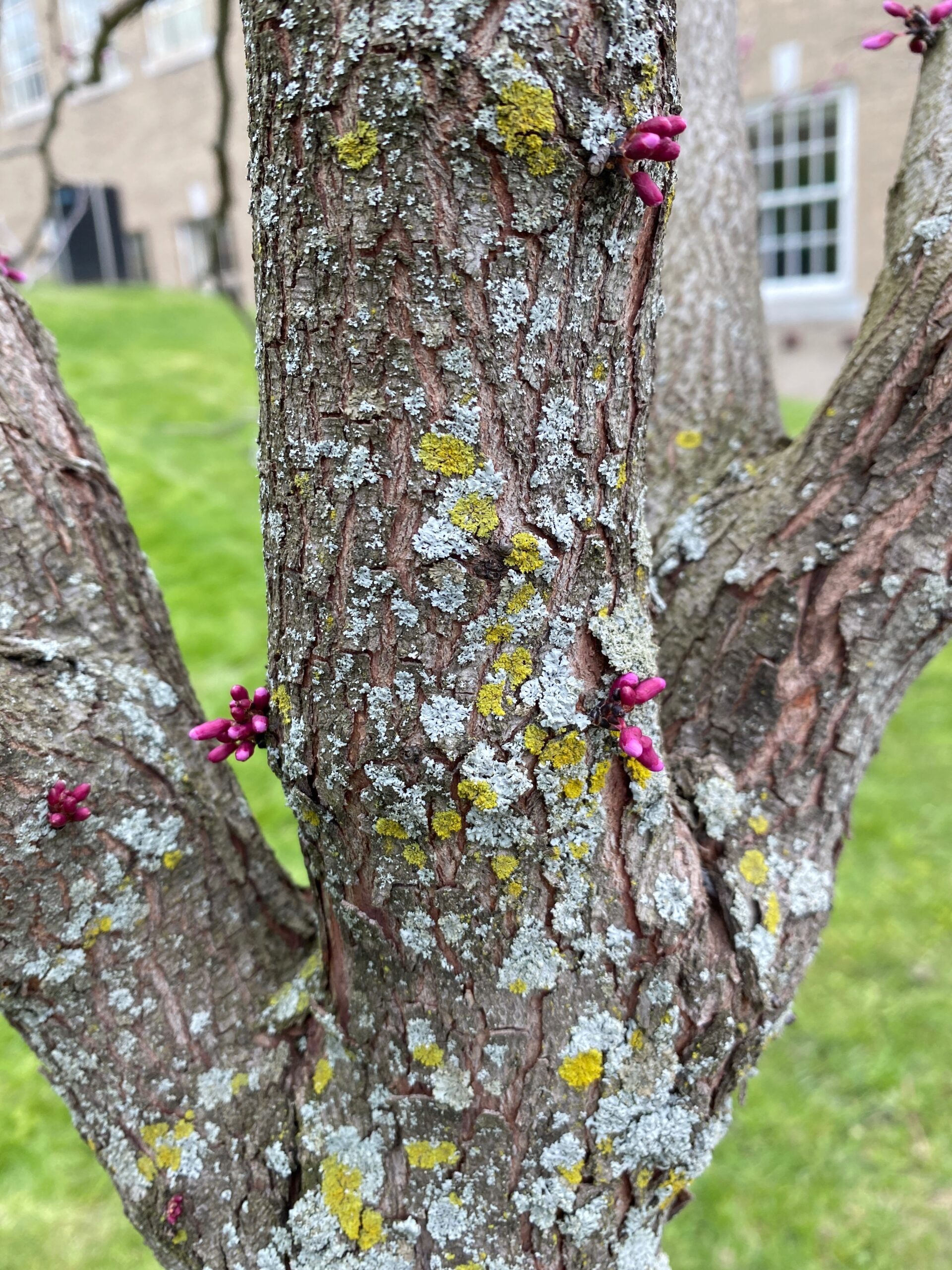
Reportedly, Native Americans also used the bark medicinally in internal preparations. The bark has a high concentration of tannins, so it may not be the most pleasant-tasting tea, and large amounts can cause digestive issues.
Eastern Redbuds are also great trees for beekeepers because they provide early blooms for honeybees.
While most livestock don’t prefer them, Eastern Redbud foliage is safe for most animals.
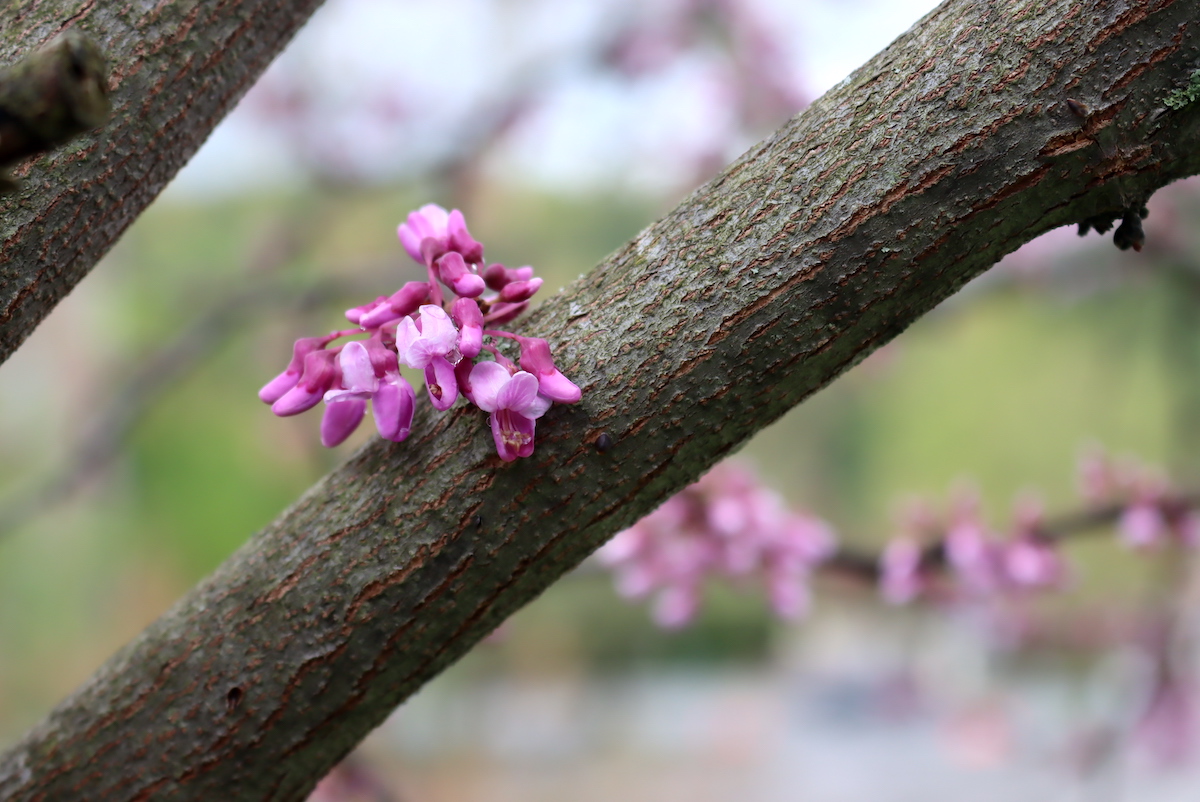
Eastern Redbud Medicinal Benefits
Native Americans, including the Cherokee, Alabama, Navajo, Kiowa, Delaware, and Oklahoma, used Eastern Redbud for culinary, spiritual, and medicinal purposes.
One of the common medicinal preparations was an infusion of the bark. They used this infusion to treat flu, whooping cough, vomiting, diarrhea, dysentery, colds, and fever. They also used infusions of the inner bark or roots to relieve congestion.
Herbalists in the Ozarks also made infusions of the bark. In addition to physical ailments, they also used the tea to help treat winter depression.
Eastern Redbud flowers also contain exceptionally high concentrations of vitamin C. They have more vitamin C than most domesticated fruits, including oranges! Historically, this feature made them a vital springtime resource after a winter of limited fresh food.
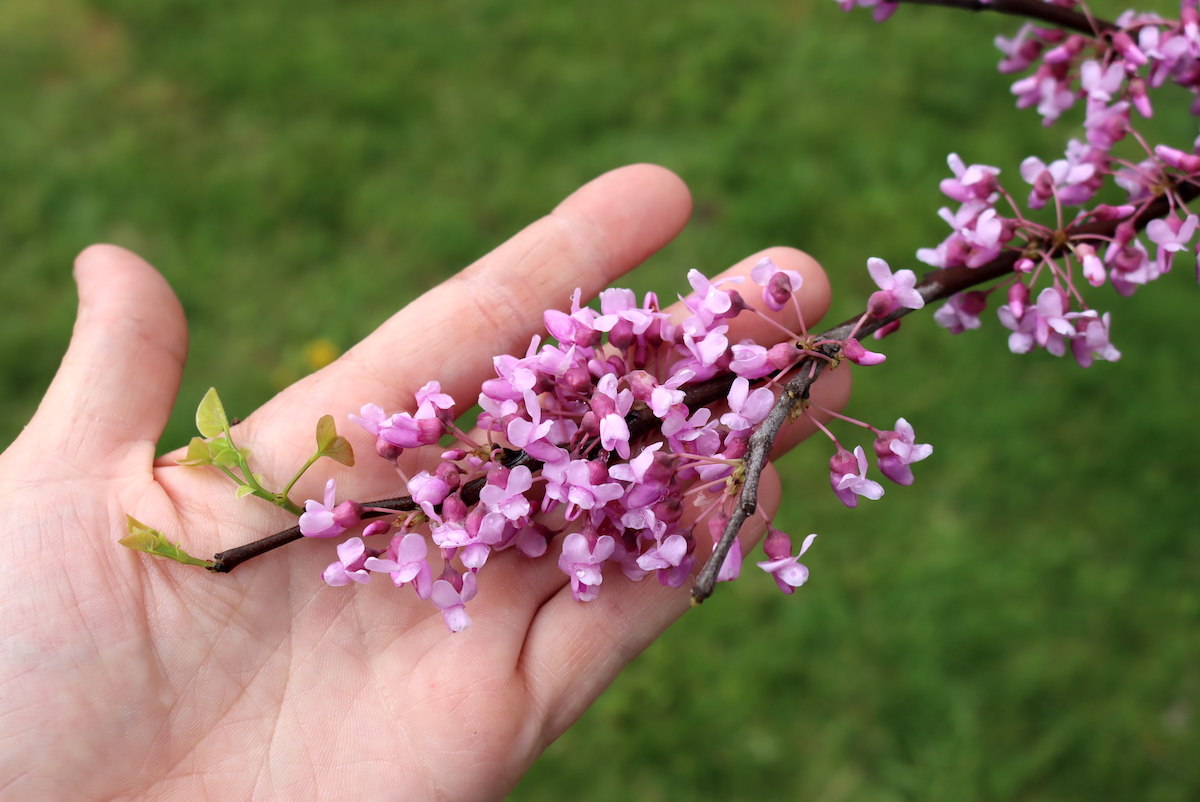
In 2017, Kelly Marie Steinberg, a graduate student from the University of Alabama, completed a dissertation examining the compounds found in the essential oil of Eastern Redbud bark. She found that the oil contained several compounds, including lupeol, which scientists believe may have anti-inflammatory and anti-cancer properties. Steinberg felt these results may account for the Cherokee and other Native American tribes’ medicinal use of Eastern Redbud.
We also know that the seed pods are also high in essential antioxidants. Isoquercitrin, a compound with anticancer, antidiabetic, antimutagenic, osteoclastic, and antihypercholesterolemic effects, was first isolated from Eastern Redbud seed pods.
While few modern studies have been conducted, the Eastern Redbud is undoubtedly an important tree for herbal medicine.
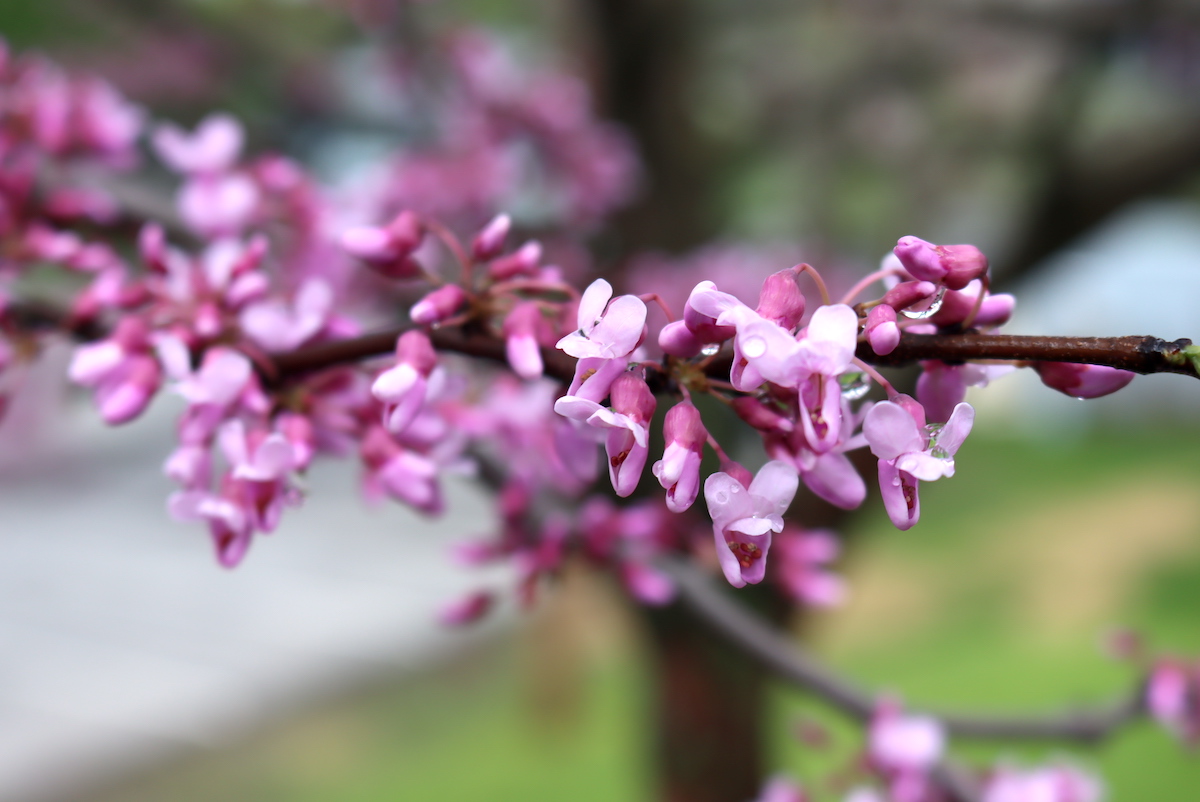
Where to Find Eastern Redbud
As its name suggests, Eastern Redbud grows in the Eastern United States. It extends from Pennsylvania west to Nebraska, south to Florida, and into Texas and parts of Mexico.
In the wild, Eastern Redbud frequently grows as an understory species in mixed and hardwood forests. You can also find it along streambanks, ravines, bluffs, farmlands, and open, rocky woodlands. Its beautiful spring blooms have made it a popular ornamental tree, and you may also see it planted in lawns and gardens.
Eastern Redbud prefers moist, rich, well-drained soil. It tolerates nearly any soil type except coarse sand. As an understory species, the Eastern Redbud will grow in partial to full shade but is typically more abundant on warmer, south-facing slopes. While it will grow in other soil, Eastern Redbud is also more abundant in alkaline soils with a pH above 7.5, such as limestone outcrops.
You can also find eastern redbud in ornamental plantings in suburbs and city centers.
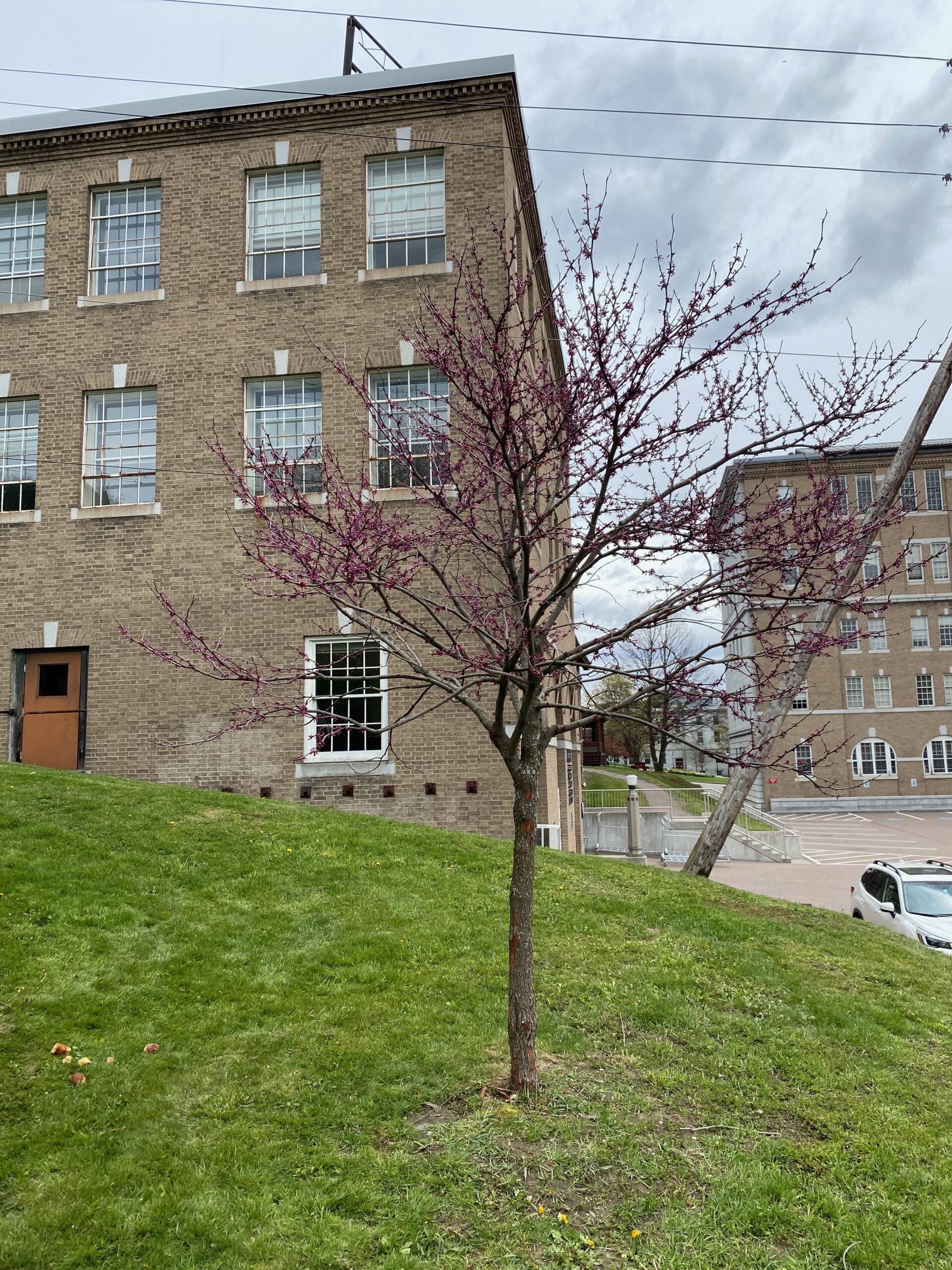
When to Find Eastern Redbud
You can find Eastern Redbud year-round, depending on which part of the tree you’re foraging. It’s a deciduous perennial, so while the leaves won’t be present in the winter, you can still harvest the roots and bark for medicinal purposes. Sometimes, you can also find the dried seedpods hanging from the tree throughout the winter, making them an excellent winter survival food.
The best time to harvest the leaves is in the early spring, around the time you’ll want to gather the blooms, too! Eastern Redbud blooms between March and May. In southern areas like Georgia and Texas, the flowers typically appear in March, while in more northern regions, like Pennsylvania, they may not appear until May.
Shortly after blooming, the tree will begin forming seed pods. If you want to eat them like snow peas, it’s best to harvest them when they’re small, young, and tender. Try to pick them in spring when they’re 2 inches long or less.
Alternatively, you can let the seed pods mature and harvest them when they turn brown or begin to turn brown in late summer or early fall. You use them more like a dry bean or roast them at this stage.
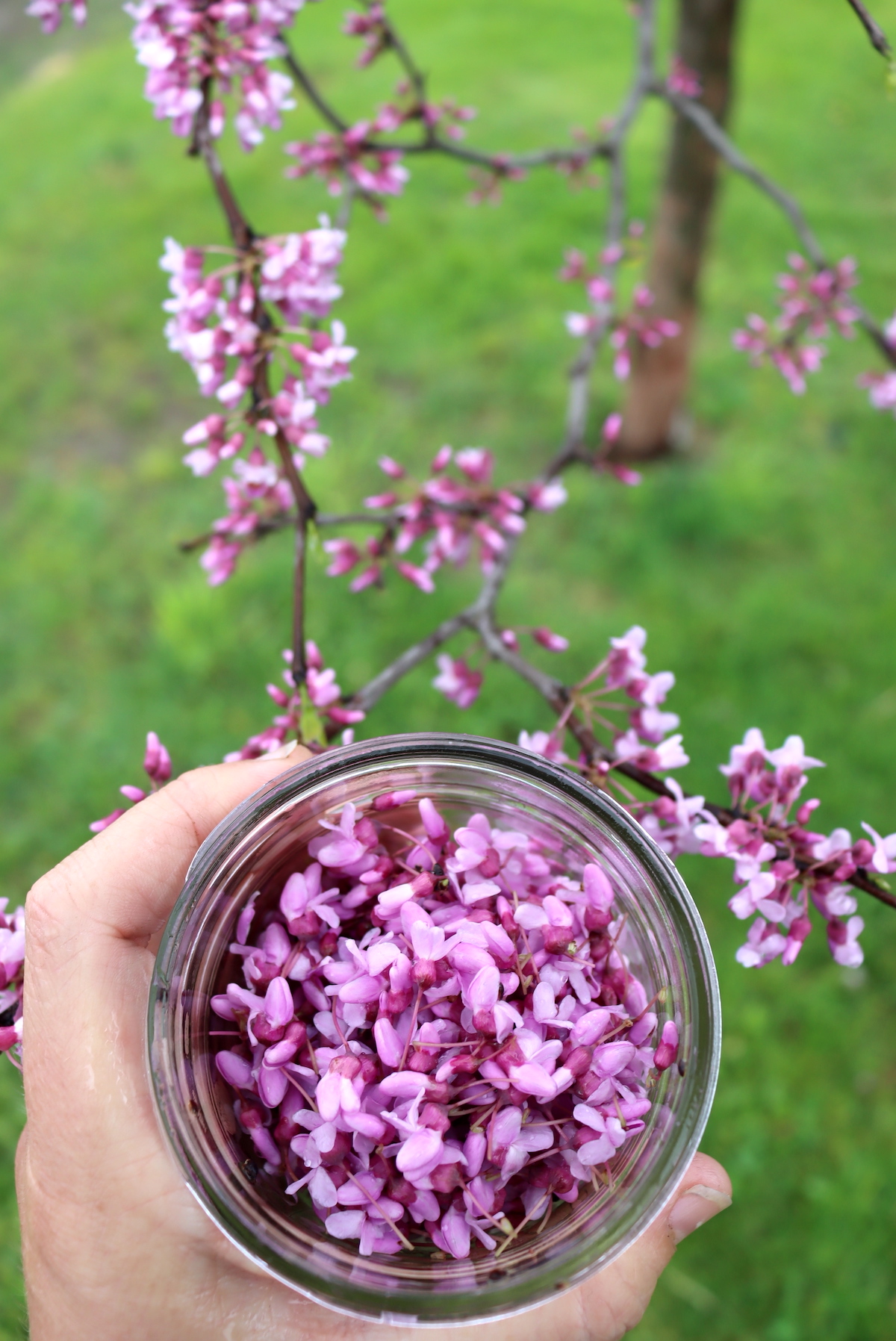
Identifying Eastern Redbud
Eastern Redbuds are small trees with wide, spreading umbrella-shaped crowns. In summer, their smooth, leathery, heart-shaped foliage and dangling, pea-shaped pods will help you pick them out.
The Eastern Redbud is easy to spot in early spring when it’s blooming. In many parts of Appalachia, you’ll notice the trees giving the hillsides a pinkish-purple tinge long before other trees are blooming or leafing out. They have a distinct look, with their branches covered in clusters of pink flowers.

Eastern Redbud Leaves
Eastern Redbud has fairly distinct, simple, alternate leaves with long stalks. They’re 2 to 5 inches long, leathery, and heart-shaped with broad, short points. They have smooth edges, and each leaf usually has 5 to 9 main veins.
The leaves are generally green above, paler, and sometimes hairy beneath, turning yellow in autumn.
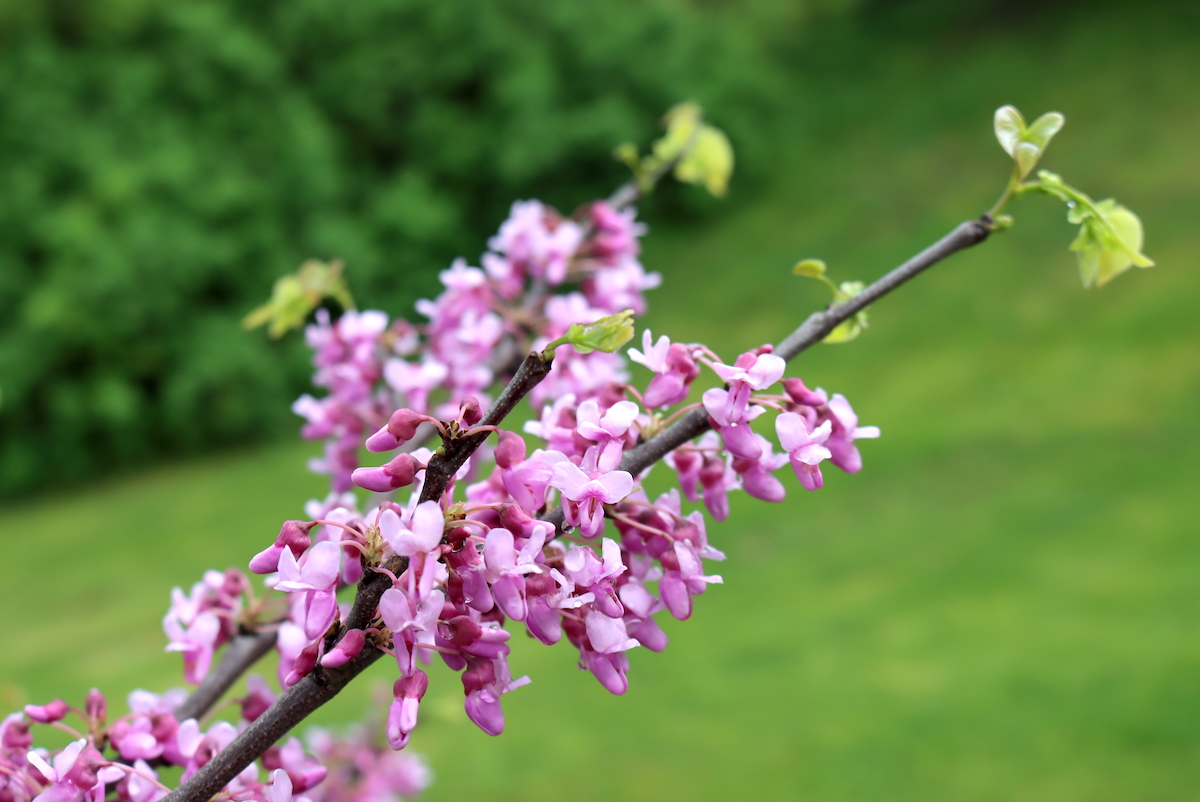
Eastern Redbud Bark & Stems
Eastern Redbuds are relatively small trees. They occasionally reach 40 feet tall, but most only grow to 20 to 30 feet tall. The trunks typically reach about 8 inches in diameter.
The bark is typically smooth and dark gray to brown but becomes furrowed into scaly plates on older trees. The young twigs are usually brown, slender, and angled.

Eastern Redbud Flowers
Eastern Redbuds have pinkish flowers that form in clusters of 4 to 8 along the young twigs and branches. They form in early spring between March and May, before the tree leaves out.
Each flower is about ½ inch long and shaped like a pea flower with five slightly unequal pinkish-purple petals. Occasionally, you may spot a few white flowers.
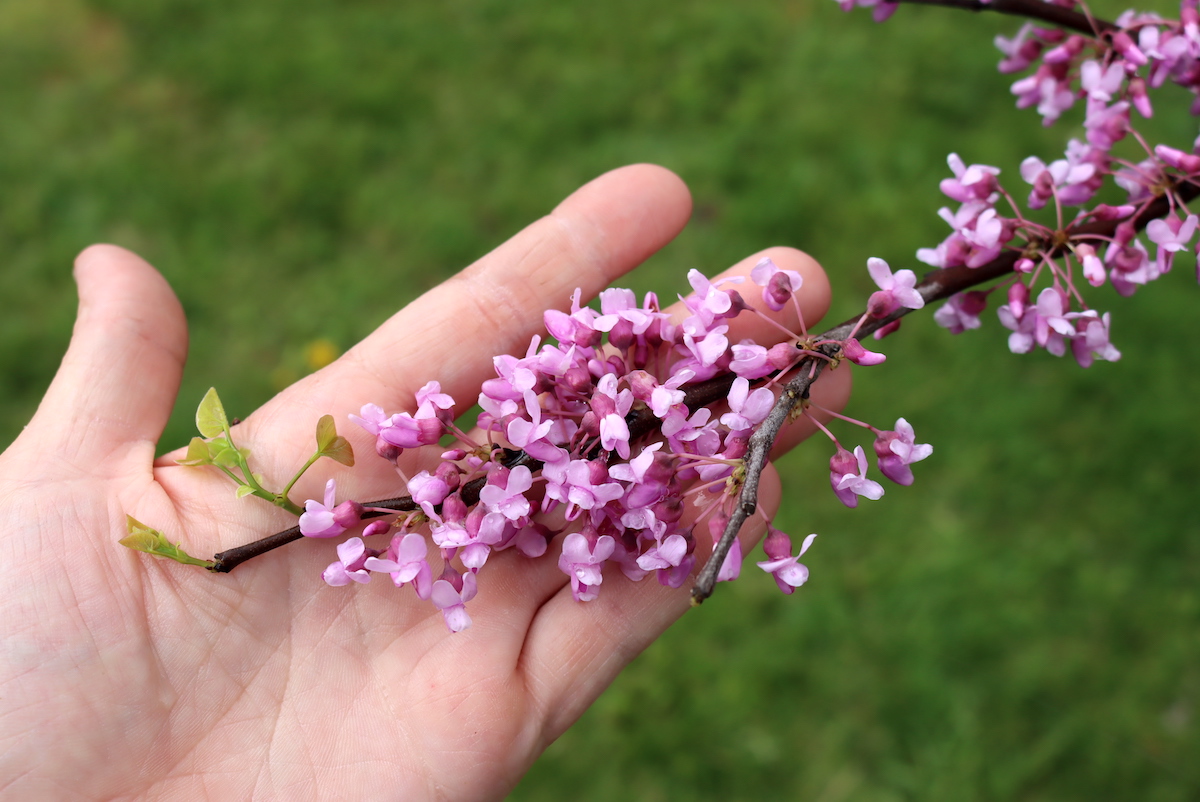
Eastern Redbud Seed Pods
Eastern Redbud produces flat, narrowly oblong snow-pea-like pods with pointed ends. The pods dangle from the branches and grow 2 ½ to 3 ¼ inches long, ripening from green, sometimes to purplish, and eventually to dark brown or blackish.
They split open along one side in late fall or winter to release 10 to 12 flat, elliptical dark brown seeds.
Eastern Redbud Look-Alikes
Eastern Redbud is sometimes mistaken for Southern Catalpa (Catalpa bignonioides). However, Southern Catalpa differs in several noticeable ways:
- Southern Catalpa’s heart-shaped leaves are 6 to 12 inches long and oppositely arranged.
- Southern Catalpa has brownish-gray, scaly bark.
- Southern Catalpa features showy, white, bell-shaped flowers in clusters of 10 to 20.
- Southern Catalpa produces thin, cigar-shaped seed pods 6 to 12 inches long.
Another Eastern Redbud look-alike is Northern Catalpa (Catalpa speciosa). However, Northern Catalpa also differs in several easy-to-spot ways:
- Northern Catalpa’s heart-shaped leaves are 6 to 12 inches long and oppositely arranged.
- Northern Catalpa features showy, white bell-shaped flowers with orange stripes and purple spots inside.
- Southern Catalpa produces narrow, cylindrical seed pods 8 to 18 inches long.
Ways to Use Eastern Redbud
Eastern Redbud is an incredible resource for year-round medicinal and culinary foragers. During the winter, you can harvest some of the roots of bark for astringent tea to help treat depression, colds, flu, coughs, digestive problems, and other ailments.
The flowers are always an exciting part of spring for avid foragers. You can eat them fresh off the tree or in salads or garnishes. You can also pickle them. While they were just budding, settlers sometimes gathered and pickled them as a local replacement for capers.
You can also use the flowers to make tea, jelly, pie filling, syrup, or as decoration and flavor for baked goods. The flowers’ high levels of vitamin C also make them an excellent addition to immune-boosting teas and tinctures. You can use them fresh or dried.
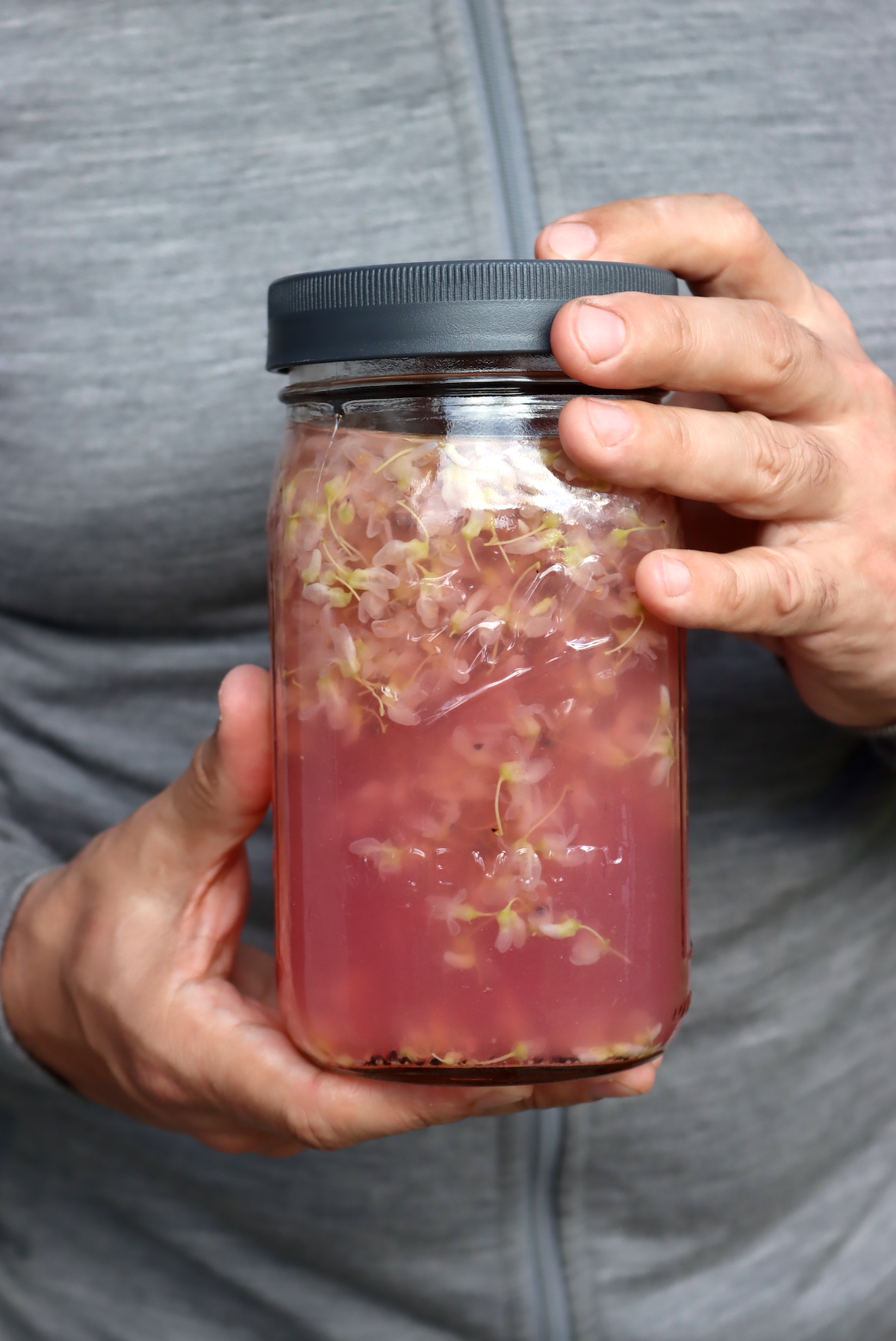
Around the same time, you can gather some of the leaves before they grow large and tough. The leaves are tasty fresh or make an excellent potherb. Add them to salads, soups, stir-fries, and other meals where you would use greens.
After blooming, Eastern Redbuds produce tasty snow-pea-like pods. Harvest them while they’re young and tender. You can eat these pods raw, but many foragers find their taste improves with cooking. Like the leaves, you can steam or saute the pods and add them to stir-fries or your other favorite recipes.
As the pods mature, they become brown and dry. At this point, you can harvest the pods for the seeds inside. Traditionally, the seeds were roasted. Reportedly, the Navajo roasted the pods in the coals of a fire, then shelled and ate them. Some modern foragers report cooking these dried seeds like dried beans or lentils. As these pods remain on the tree into late fall and winter, they make excellent survival food. The mature seeds may contain up to 30% protein.
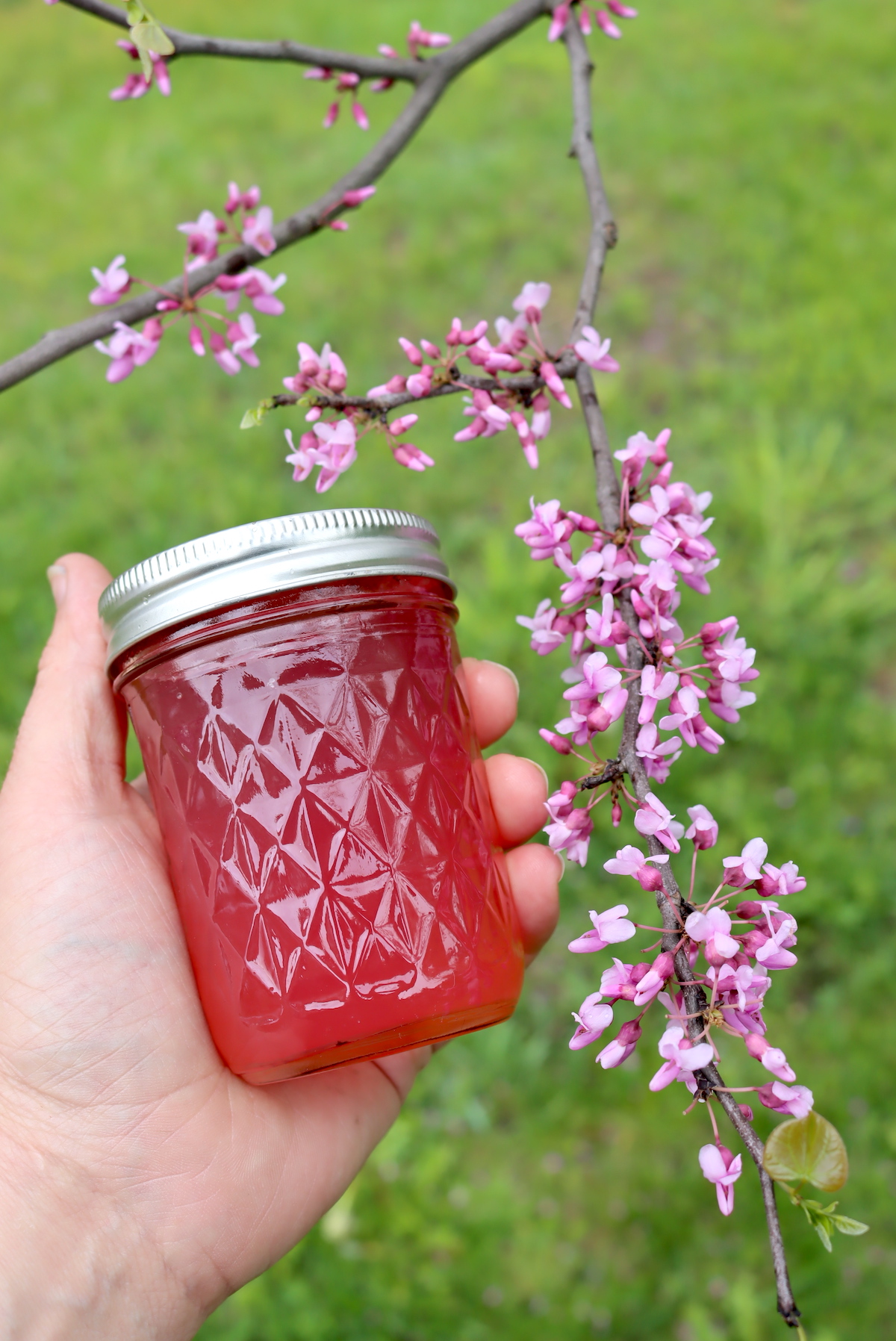
Eastern Redbud Recipes
- Use the stunning Eastern Redbud blooms to make a tasty and beautiful treat with this recipe for Lemon & Cornmeal Loaf Cake with Redbud Flowers from Ful-Filled.
- Preserve those precious flowers for later with this Redbud Blossom Jelly recipe from Creative Canning.
- Make an incredible floral cocktail with this Redbud Sour recipe from Olive & Mango.
- Create one-of-a-kind crackers with this Herbed Watercress & Wild Flower Cracker recipe from Wild Edible.
- Add fancy, foraged food to your next spring picnic with this Redbud & Cucumber Tea Sandwich recipe from Live the Old Way.
- This Redbud Salad recipe from Tracks and Roots keeps it simple and fresh.
- If you’re doing a bit of spring foraging and hunting, check out this Wild Turkey Stir Fry with Redbud Seed Pods and Wild Asparagus from RealTree.
- Preserve some of the young seed pods for later with this tutorial for Wild Fermented Eastern Redbud Seed Pods from Zack Kouns.
Spring Foraging
Looking for more fun spring foraging guides?
- Foraging Morels
- Foraging Dryad’s Saddle
- Foraging Chickweed
- Foraging Ramps (Wild Leeks)
- Foraging Fiddleheads
- 60+ Dandelion Recipes
- Foraging Japanese Knotweed
Tree Foraging Guides
There quite a few edible trees, you just have to know where to look!
- Foraging Linden Trees (Every Part is Edible)
- Wild Foraged Linden Chocolate
- Forging Hop Hornbeam
- How to Make Willow Bark Aspirin
- Harvesting and Using Slippery Elm Bark
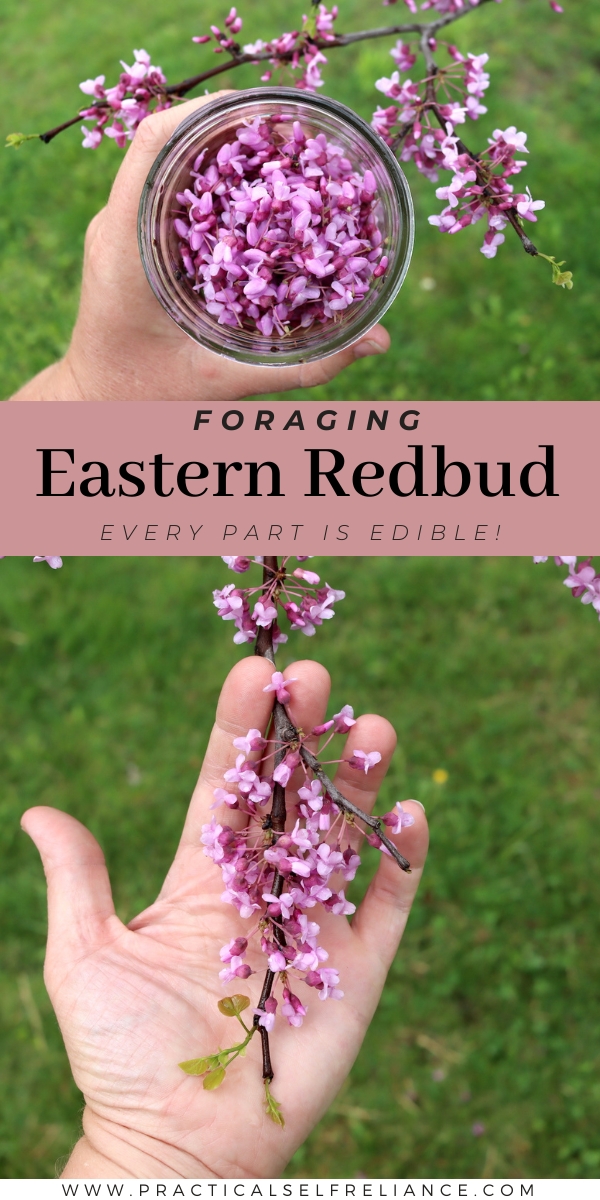
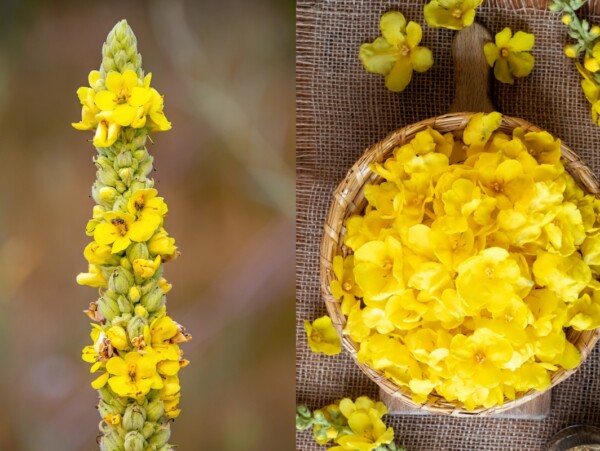
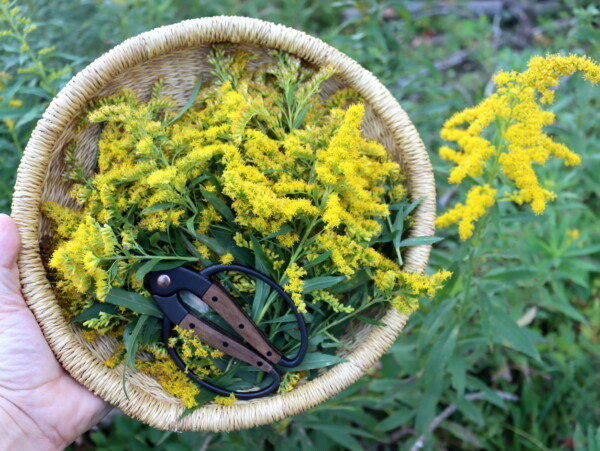
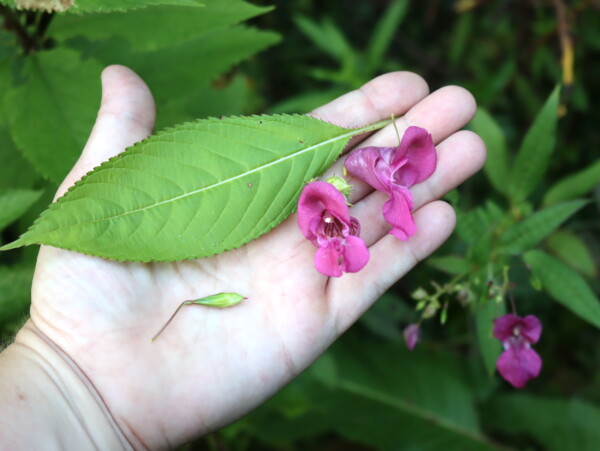
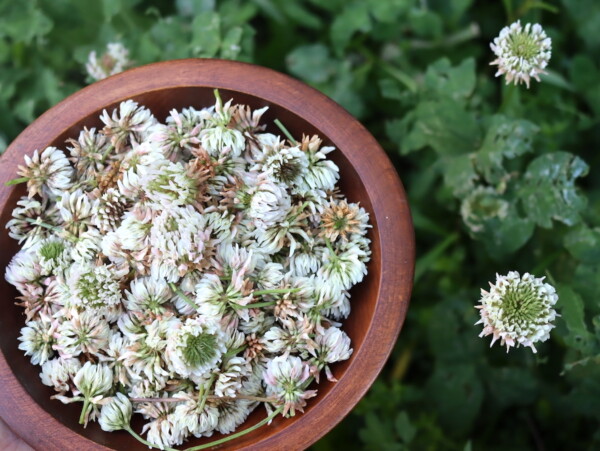
LOVE THIS BLOG! I am a new forager (into my third year) in SW Missouri. Redbuds are everywhere this time of year. I’m excited to try the tea and use in cookies. Last year, I made dandelion bread and cookies (yummy), henbit noodles, and chickweed pesto. Always looking for recipes. Thank you for sharing your knowledge.
Wonderful! So glad it’s helpful to you =)